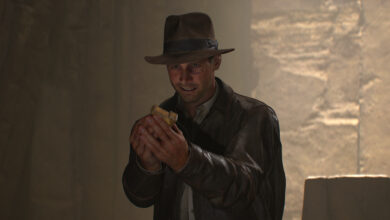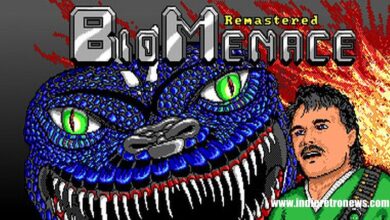How the Donkey Kong Country trilogy revolutionised the platforming genre | GamesYouLoved

British software developer Rare has the perfect name, it’s rare for a development studio to match the insane talents at Nintendo. But during the mid-1990s, that’s exactly what they did. With the making and release of Donkey Kong Country in November 1994, Rare matched (and some would say beat) Nintendo at its own game.
Nintendo had been well-known for platforming games since the arcade version of – what else? – Donkey Kong in 1981 which served as the ntroduction for both characters Mario, then known simply as Jumpman, and Donkey Kong. Donkey Kong served as the villain, having kidnapped Pauline a maybe or maybe not girlfriend of Jumpman’s. The hero’s task was to avoid rolling wooden barrels, static flaming oil barrels and ghosts in his ascent to the top of the level to rescue Pauline.
Addictive and hugely replayable, the first home conversion came on the ColecoVision in 1982. The port for the Nintendo Entertainment System came in 1983 in Japan and hit the NES in the latter half of the ’80s.
Fast forward ten years and the Super Nintendo (SNES here in) and the SEGA Mega Drive/Genesis brought what was the 2D platform genre’s zenit with games like Super Mario World, Sonic the Hedgehog 2 and a line of successful Disney spinoffs such as The Lion King and Aladdin.
That’s not to mention countless rival titles: Busby, Cool Spot, Zool, Alex Kidd, Kid Chameleon and many, many more.The common elements were clear: jumping challenges, bottomless pits, collectibles, temporary power ups and end-level bosses. Weapons and projectiles were popular insome titles that leaned more towards action, but some purer platform
games eschewed this altogether.
With the advent of the PlayStation in December 1994, Nintendo knew it had to have something special to keep gamers loyal to their platform as the Nintendo 64 (still in development as the Ultra 64) wouldn’t hit the market for a further two years. Part of this push would come in the form of Donkey Kong Country that would offer 3D quality graphics beyond those seen in games like Starfox (Starwing in Europe) and Stunt Face FX that had polygons but simple shading to ensure smooth gameplay, It worked.
The graphics stunned the public and gaming pressalike and the first title in what became the Donkey Kong Country trilogy sold 9 million copies, earning the title of second-best selling videogame on the Super Nintendo Entertainment System.
Donkey Kong Country stood out not just because of its graphics, however. The level designs were awesome, with everything from industrial factories, jungles and ancient ruins to icy mountains and high-speed minecart rides. That’s not to mention the blackout levels. What’s
more, the life system was just as nuanced as Mario: one hit kills you, but you’ve always got the dynamic duo of Donkey and Diddy to monkey around with.
One hit from an enemy meant you’d swap out to yourpartner Kong although bottomless pits always proved fatal as your companion shadowed whatever jump you’d just made. You think Diddy would look before he leapt, but alas. The game held challenge andvariety in the bucket load from humorous bosses to fiendish secret bonusstages or collectibles.
Sound design was also excellent and interest in composer David Wise’s work is still high. From the thumping drums of Jungle high jinxs, the game’s opening level,to the underwater string-based ambience in Clam City, the soundtracks are fondly remembered by many-a gamer from the 1990s.
The second title in the Donkey Kong Country trilogy upped the ante by replacing Donkey Kong. Starring Diddy Kong (as the subtitle was Diddy’s Kong Quest) and newcomer Dixie Kong, the game offered new abilities. Dixie had a long blonde ponytail that could be used as a
helicopter rotor to slow your descent from a jump and make larger gaps than had been possible before. The story goes that Donkey Kong has been kidnapped, and it was up to the young ones to rescue him from the clutches of returning villain King K. Rool.
The best Donkey Kong game ever. FACT!
Everything was bigger and better in this second (and arguably finest) instalment. The soundtrack was more varied, the number of animal companions had risen to include Rattly the Rattlesnake and Squitter the Spider and the level design was more difficult, yet just as satisfying to beat. This was partly down to the newcomer animal companions boasting
super spring jumps (Rattly) or the ability to use spiderwebs to make your own platforms (Squitter). Environmental hazards like mist and wind upped the ante alongside prior challenges like levels in the dark andclassic cannonball gameplay courtesy of the spinning wooden barrels.
Finally, as all good things have to come to an end, the third game in the trilogy: Donkey Kong Country 3: Dixie Kong’s Double Trouble, remixed the main characters once more. This time players had to choose between Dixie Kong from the second game and Kiddy Kong – a baby like monkey with strength similar to Donkey Kong. His main ability is to launch Dixie to high ledges and the pair can reach heights they couldn’t scale alone.
The map screen was more interactive in this title as players had to navigate using a range of water craft from Funky’s Rentals, even utilising a hover craft and Turbo Ski – a sort of Jet Ski made from a wooden barrel. Bonus games were also made more of in this final game as it went beyond DKC2’s quizzes. Players actually had a chance to compete against Cranky Kong himself and rub their hands with glee at getting their own back for his constant snide taunts over the last two games.
What stands out, even now, is that the games weren’t afraid to mix things up to prevent the series getting stale. Each game brought new characters and abilities which made levels open up in their own ways.
Diddy was fast for the first two games but Dixie could use her ponytail as a rotor to slowly spin around and manage her descent precisely. In the third game, Kiddy Kong (known as Dinky Kong in Japan) was a throwback to the abilities of Donkey Kong in the first game but could
throw Dixie Kong far higher. From animal buddies to bonus stages, each game felt fresh whilst retaining that classic DKC platforming glory.
https://www.youtube.com/watch?v=BcWjw0r7e20
With sales of 16.8 million worldwide, the original trilogy’s influence cannot be understated. Nintendo retained the design of Donkey Kong as dreamt up by Rare for all subsequent games, be those racing titles like the Nintendo 64’s Diddy Kong Racing (1997), rhythm spin-offs like Donkey Kong Jungle Beat (2004/5) for GameCube or indeed mainstream Donkey Kong Country games such as the Wii U’s 2014 Donkey Kong Country: Tropical Freeze.
This latest game was something of a spiritual successor to both the original Super Nintendo trilogy and the 2010 Wii title Donkey Kong Country Returns although did not dent the top ten of Nintendo game sales on Wii U which suggests sales never topped much beyond 1 million units worldwide.
There are still plenty of ways to enjoy the original Super Nintendo trilogy thanks to the Wii, Wii U and New 3DS Virtual Console offerings to save yourself those painful bills from online auction websites or retro gamer conventions.
Finally, 2017 could finally see the two old rivals Mario and Donkey Kong reunited. Speculation is rife that forthcoming Nintendo Switch title Super Mario Odyssey will featuring Donkey Kong in some shape or form. One world shown was a city called New Donk City and several streets have telling names like Dixie Street, Expresso Street and Cranky Street. Elsewhere there are signs for Diddy’s Mart and another street sign points to Squawk’s Park. Whether or not Donkey Kong could now star in a Mario title as a villain or sub-boss remains to be seen but the nostalgic hope remains!
Thanks to Bryan Langley for this article, you can follow him on Twitter https://twitter.com/atheist_monk






 wireless 5000rs
wireless 5000rs #gameconsole #gamestick
#gameconsole #gamestick
